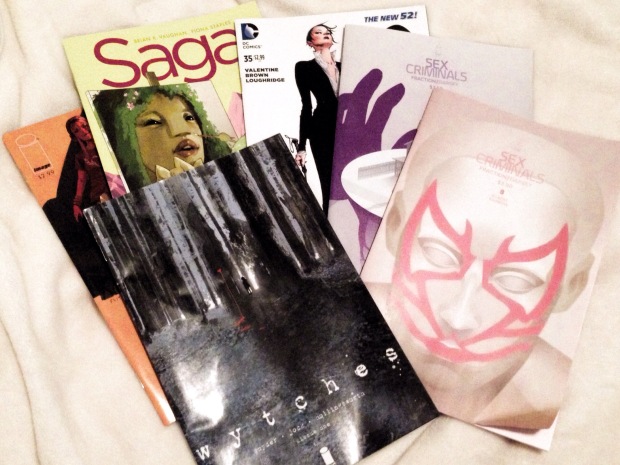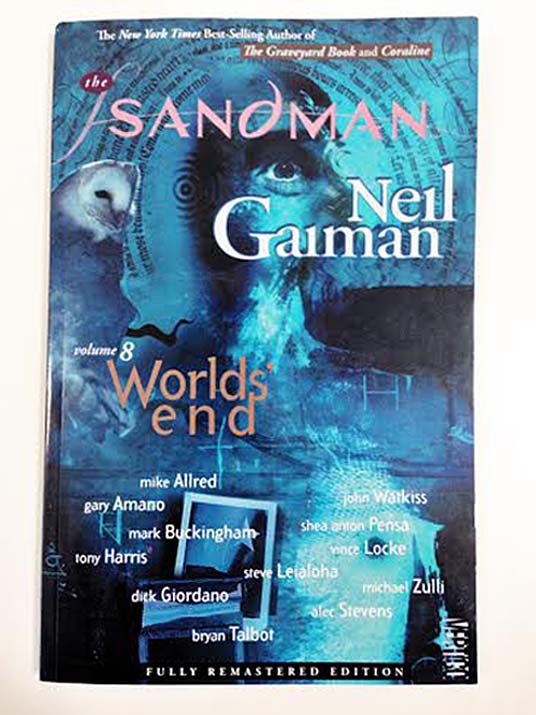I love the Harry Potters, the Quentins, and the Kvothes of the literary world. They are believable, flawed characters who are a hell of a lot of fun to read about. But sometimes I just get tired of watching boys have all the fun and get all the glory.
Not to say there’s not terrific women characters in these books as well. Harry Potter, the Magicians, and the Kingkiller Chronicles (my small, biased sample) all have really interesting, varied women who do real things that influence the story.
But I want to see more leading ladies.
This doesn’t mean we need fewer great adventure stories with men at the helm, it means we need more of them with women leads. It doesn’t take anything away from the complexity and enjoyment of what’s already out there to add to what’s already good. More women, more diversity, more stories. Because from that we get sharper and more human storytelling, which can only be a good thing.
A few weeks ago I asked on Facebook for recommendations of books with women leads (specifically fantasy or quest adventures because that is what I like). We came up with a great list that includes Outlander by Diana Gabaldon, Mary Robinette Kowal’s glamourist histories, the Mistborn series by Brandon Sanderson, His Dark Materials by Philip Pullman, and more. (And I’m assuming we all already know about Divergent and the Hunger Games.)
I haven’t read all the books we talked about–I’m putting Mistborn at the top of my list. What I have read this year that I’ve been really excited about is comics. I’m relatively new to the comics world–I first read Saga and Sandman last year–and I wish it hadn’t taken me so long. The books I’ve read this year have diverse, provocative storytelling based on complex human (and not so human) characters.
And by chance, just about every series I’ve picked up this year has a woman lead: Saga, Sex Criminals, Wytches, and ODY-C.
I couldn’t have planned a better introduction to comics than Saga, by Brian K. Vaughan and Fiona Staples, if I tried. It is a creative, complex space …saga (sorry!) and it’s touching and funny and brutal and smart. Hazel, the daughter of two lovers who are on the run from their warring home planets narrates Saga, so we are literally in the head of a woman telling this story. Alana, Lying Cat, Izabel, Gwendolyn and more (more! there’s so many great women in this comic I can’t even list them all) make sure that women are not only included, but they are at the forefront of this story.
In many fantasy stories I get super bored reading sex scene after sex scene from a straight man’s perspective that focuses on the size and shape and smoothness (barf) of some girl’s breasts. Matt Fraction and Chip Zdarsky’s Sex Criminals is just as dirty as it sounds, but the perspective on sex (and life) comes from Suzie, the main character who can freeze time when she orgasms. Sex criminals is full of sex and crime (obviously, I guess), but it’s really a story about being vulnerable to another person and being brave enough to share your fears and secrets with the world. It takes themes of gender issues, sexuality, and hiding who you are and mixes them with bank heists, sex toys, and intergalactic police.
I love horror, but finding leading women in horror is few and far between. (Can you think of some? Let me know). Lucky for me, Scott Snyder, Jock, and Matt Hollingsworth’s Wytches’ lead is a young girl, Sailor, who moves to a new town where something is lurking in the woods. Sailor and her family are trying to escape a tragedy and make a new start, but the wytches don’t appear to forgive and forget. Wytches takes on fear, bullying, and family–which at times can be pretty scary, am I right?
I heard some buzz about Matt Fraction and Christian Ward’s ODY-C before I read issue no. 1, which just came out a few weeks ago, and, boy, is it earned. The absolutely stunning art accompanies an updated version of the Odyssey. Set in space, this Odyssey is full of women. Just about every character is a woman (or a sebex), and there’s warriors, lovers, parents, and, of course, Captain Odyssia. It was a blast to read and I can’t wait for issue no. 2.
If you, like me, are thirsty for new and exciting characters of all kinds, please check out some comic books. If I never picked one up I’d be missing out on some of the best stories of the year.



